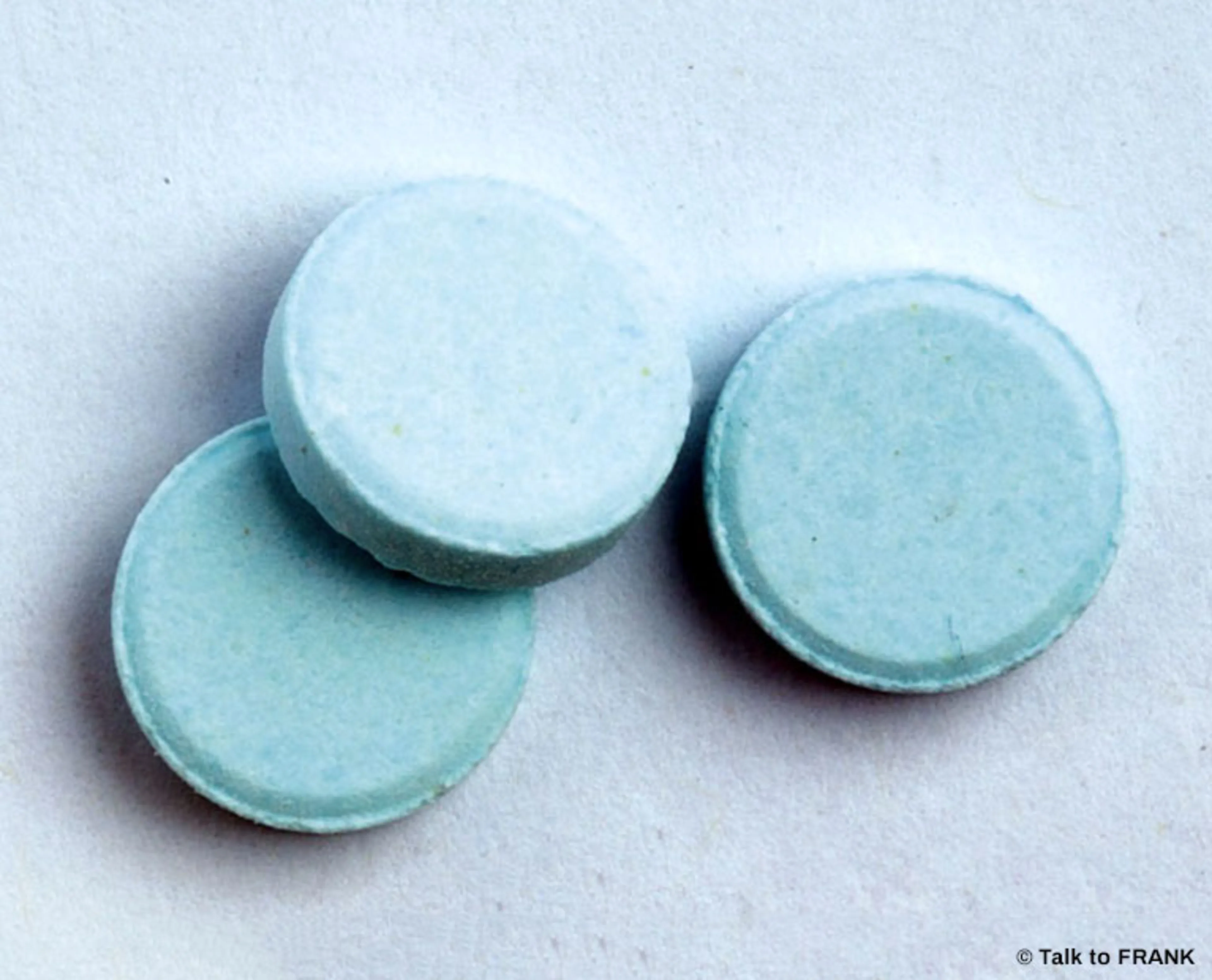
Tranquillisers
Minor tranquillisers can induce periods of calmness, relaxation and sleep, and are used to treat anxiety and insomnia
Also called:
- Benzodiazepines
- Benzos
- Blues
- Diazepam
- Downers
- Eggs
- Jellies
- Mazzies
- Moggies
- Norries
- Rohypnol
- Roofies
- Rugby Balls
- Valium
- Vallies
- Xanax
What does it look like?
There are two types of tranquillisers: ‘major’ (which are non-addictive antipsychotics) and ‘minor’ (which are relaxants that are addictive and liable to misuse). Here we’re just talking about minor tranquillisers.
In medicine, tranquillisers are used to treat anxiety and insomnia.
They come as tablets, capsules, injections or suppositories (tablets inserted up the bum); and come in a wide variety of colours.
There are many different types of minor tranquillisers, but the most common are the group of drugs called benzodiazepines.
These include Xanax, Rohypnol, Valium (also called diazepam), temazepam and phenazepam (although this latter drug is sometimes found in street drugs, it is not prescribed by doctors in the UK).
Tranquilisers come as tablets, capsules, injections or suppositories (tablets inserted up the bum).
Some people crush or melt tranquillisers that come as tablets or capsules, so that they can be injected. This is extremely dangerous and sometimes fatal. The chalk in the tablets is a major cause of collapsed veins which can lead to infection and abscess. Injecting gel capsules can also be fatal when the gel solidifies inside the blood vessels.
How does it make you feel?
Minor tranquillisers can induce periods of calmness, relaxation and sleep, and are used to treat anxiety and insomnia. They are prescription only medicines that can normally only be prescribed following a consultation with a doctor.
In the club scene, tranquillisers are often used as chill-out drugs, and to help people sleep after taking stimulants. Some people use them to help come down off acid, cocaine, speed or ecstasy after a big night out.
Effects of tranquilisers are:
- Sedation – they depress the nervous system and ‘slow’ the brain and body down
- Relief of tension and anxiety – helping the user feel calm and relaxed.
- Help with insomnia
How long the effects last and the drug stays in your system depends on how much you’ve taken, your size and what other drugs you may have also taken.
Physical health risks
Using tranquillisers can be risky, and especially dangerous if you mix them with other depressant drugs like heroin or alcohol.
Here’s what tranquillisers can do to you:
People who are addicted to tranquillisers can experience nasty withdrawal symptoms, which can include decreased concentration, tremors, nausea, vomiting, headaches, anxiety, panic attacks and depression. Very uncomfortable bodily sensations can also develop; and fits can occur, which in severe cases can be fatal.
Some people crush or melt tranquillisers that come as tablets or capsules, so that they can be injected. This is extremely dangerous and sometimes fatal. The chalk in the tablets is a major cause of collapsed veins which can lead to infection and abscess. Injecting gel capsules can also be fatal when the gel solidifies inside the blood vessels.
There are concerns that tranquillisers have been used in sex crimes, where a victim’s drink is spiked with a tranquilliser, for example Rohypnol, making them very drowsy or knocking them out so they're either unaware of, or unable to, prevent a sexual assault.
Mental health risks
Some have been shown to cause short-term memory loss and big doses can make a user forgetful and make them overly sleepy.
They can be highly addictive, and so are mainly recommended only for short-term use in medicine.
What is tranquillisers cut with?
Most tranquillisers that are available on the street are either stolen from a hospital or pharmacy or from people who got them on a prescription. They might have also been imported from abroad. You cannot normally be sure of the purity unless you are certain that the drug you have is a genuine pharmacy medicine.
Is it dangerous to mix with other drugs?
Mixing drugs is always risky but some mixtures are more dangerous than others.
What happens if I mix Tranquillisers and
Can you get addicted?
Tranquillisers can cause psychological and physical addiction and, because tolerance increases over time, users may have to keep increasing their dose either to get the same hit, or just to maintain the initial positive medical effect on their anxiety or insomnia.
It is because of the risk of dependence that tranquillisers are recommended normally only to be used for short periods of time and only for severe cases.
Withdrawal can cause unpleasant symptoms like a pounding headache, nausea, anxiety and confusion. Some people report withdrawal symptoms after only four weeks' use. These can be dangerous and require medical help.
If you, or a friend, has a problem with tranquillisers and want to stop using, you should talk to your GP for help and support.
The other type of tranquillisers, the ‘major’ tranquillisers (antipsychotics) are not addictive.
Class: C
This is a Class C drug, which means it's illegal to have for yourself, give away or sell.
Possession can get you up to 2 years in prison, an unlimited fine or both.
Supplying someone else, even your friends, can get you up to 14 years in prison, an unlimited fine or both.
Like drink-driving, driving when high is dangerous and illegal. If you’re caught driving under the influence, you may receive a heavy fine, driving ban, or prison sentence.
If the police catch people supplying illegal drugs in a home, club, bar or hostel, they can potentially prosecute the landlord, club owner or any other person concerned in the management of the premises.
Was this information useful?